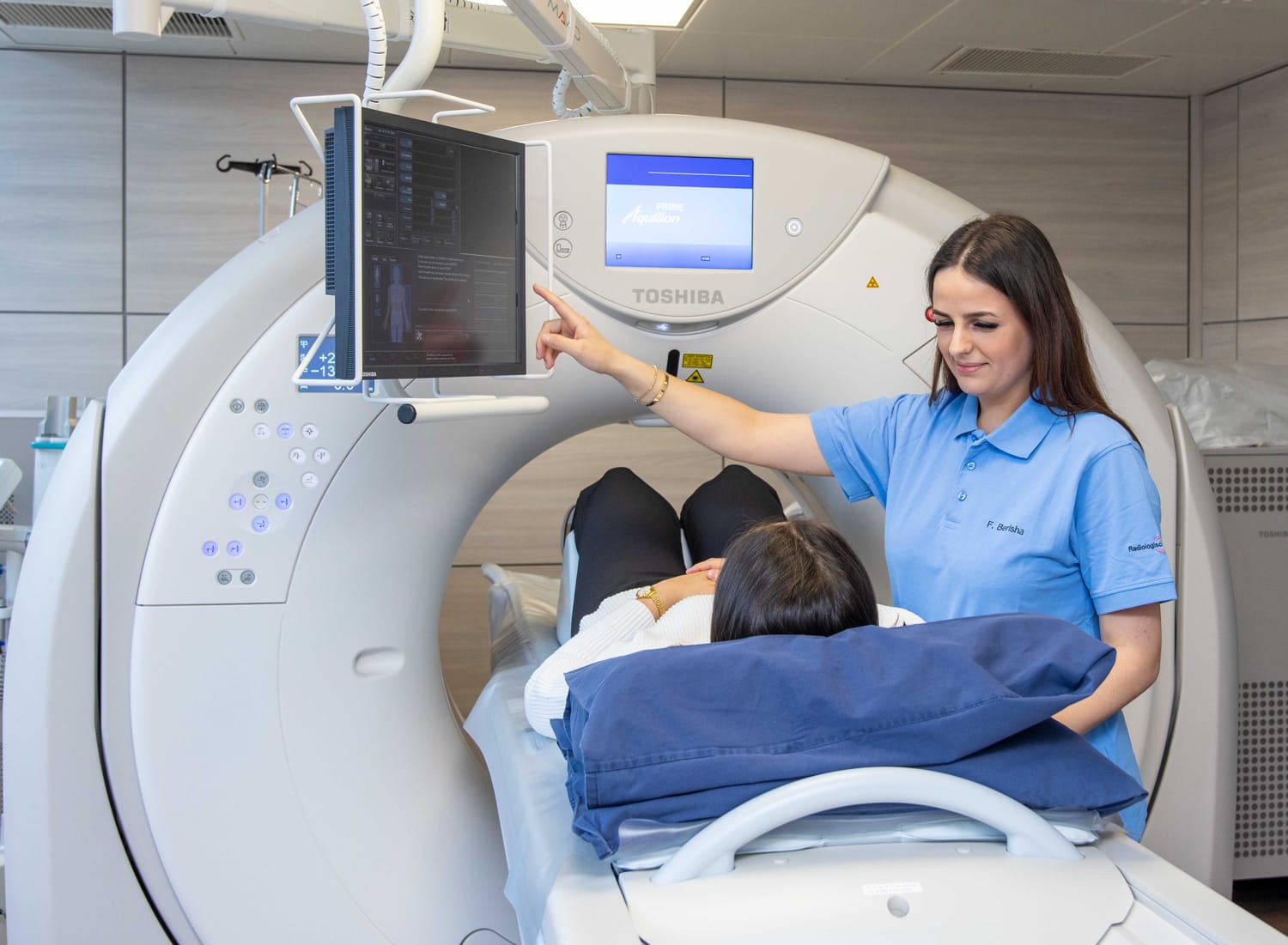

Computed tomography (CT) is an imaging examination method that uses X-rays to produce detailed cross-sectional images of the body. CT is particularly suitable for examinations of the skeleton, the lungs, the heart, the entire abdominal cavity and the skull. We also carry out minimally invasive pain therapy using CT.
During a CT scan at the Baden Radiology Center, the patient lies on a movable table that moves through the CT scanner. The examination is painless, fast and provides high-resolution images.
Preparation for the examination can take up to an hour if, for example, a contrast agent needs to be drunk. The examination itself is quick and only takes a few minutes. We will let you know the approximate time required for the examination when you make your appointment.
After the examination, the CT images are post-processed. Special 3D reconstructions are produced for complex cases. The processed images are assessed by our radiologists and a report is prepared.
The results of the examination are usually sent to the referring doctor on the same day. In emergencies, the referring doctor will be informed immediately by telephone. As the radiation exposure in CT is higher than in normal X-rays, your referring doctor and we carefully weigh up the benefits and risks before each CT examination.
For some examinations, contrast medium must be injected into a vein (intravenously or intravenously), which increases the visibility of structures, inflammations or blood vessels in the CT.
For most examinations of the abdomen, it is necessary for you to drink a special contrast medium so that the intestines can be better assessed.
Our modern CT device delivers sharp, high-resolution images for exact diagnoses. Advanced image processing techniques allow precise analysis of tissues and organs. The fast scanning technology enables short examination times and improves patient comfort. State-of-the-art technology reduces radiation exposure for a safe examination.

The Radiology Center Baden is a radiology practice in a prime location right next to the train station in Baden.
Radiology Center Baden AG
Bahnhofstrasse 31
5400 Baden
Tel: 056 200 88 88
E-Mail: rz-baden@hin.ch
Website by aretis.ch